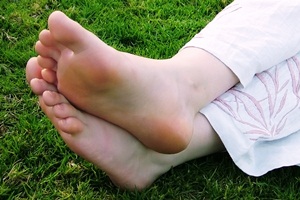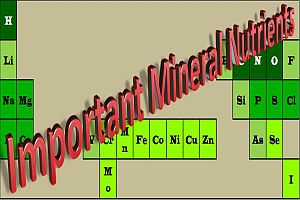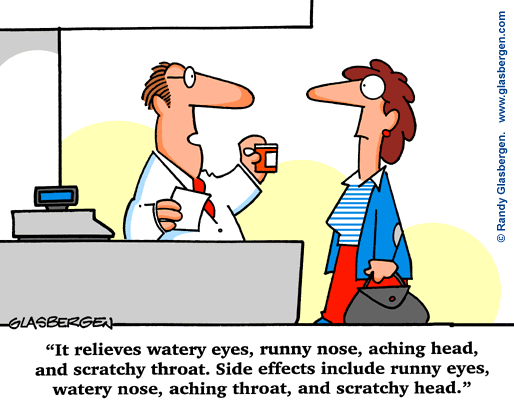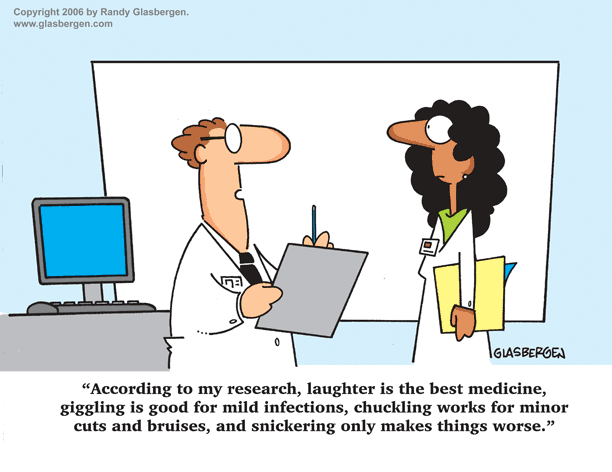How Chiropractic Has Helped Me: Introducing Jerry Rice
 Few people put their bodies through the sort of punishment that football players endure every week-during practice and at game time. Former National Football League (NFL) wide receiver Jerry Rice says that chiropractic care has been instrumental in keeping him in good condition, both on and off the field. He was named the NFL’s Player of the Year in 1987 and retired 20 years later, having broken almost every wide receiver record in the NFL. Named MVP in Super Bowl XXIII, he attributes his athletic longevity to “vigorous exercise and chiropractic adjustments.”
Few people put their bodies through the sort of punishment that football players endure every week-during practice and at game time. Former National Football League (NFL) wide receiver Jerry Rice says that chiropractic care has been instrumental in keeping him in good condition, both on and off the field. He was named the NFL’s Player of the Year in 1987 and retired 20 years later, having broken almost every wide receiver record in the NFL. Named MVP in Super Bowl XXIII, he attributes his athletic longevity to “vigorous exercise and chiropractic adjustments.”
“I believe in chiropractic and I know that it works. You probably know about my long and successful career in football, and I’m flattered by the testimonials to my durability. Football is a very rough and vigorous sport,” Rice says. “I took some vicious hits from players nearly twice my size. Thankfully, I had the durability to withstand these tackles, or I would never have succeeded or lasted as long as I did. Chiropractic was the key to keeping me in the game.” He continued, “My first experience with chiropractic care was right before the 49ers were to play the Bengals in Super Bowl XXIII. A couple of our players were injured and a chiropractor turned things around. I quickly became a believer, and ever since, I have had the benefit of chiropractic care.” He added, “Chiropractic made football great for me. I was at my best and was always at 100 percent.”
Rice had chiropractic adjustments twice a week while he was training to help him recover from the regular assault his body took on the playing field. “If I had everything in alignment, I knew I could play my best football,” he said. Seeing how it helped Rice, his teammates were soon convinced that chiropractic was better than traditional care involving drugs. “I wanted to set the standard within football,” he said. “I knew if chiropractic helped me put up outstanding numbers, it could help my teammates do the same.”
After his successful football career, Rice then went on to a new physical challenge: learning to dance like a professional. Rice related what taking on this new adventure was like. “‘Dancing With the Stars’ was every bit as exhausting and challenging. Though not nearly as brutal as football, it required many hours of practice I had aches and pains that I’d never had before. Again, chiropractic made the difference, and kept me dancing and in the competition.”
Rice wants to get the word out to as many people as possible regarding the benefits of chiropractic care. He says, “The game of life requires the edge that chiropractic provides. Chiropractic care allows me to lead a very active lifestyle. I have seen its value, both personally and professionally, among my friends and teammates.”
Jerry Rice Shares Personal Success with Chiropractic Care http://www.youtube.com/watch?v=_CAsGNlQEnI
What Are “Flat Feet”?
 Flat feet (sometimes referred to as “fallen arches”) are not difficult to spot. It is a condition where there is either no arch or a very low arch to one or both feet. Whereas the inside of the foot is lifted off the ground in people with normal arches, someone with flat feet will have their entire foot flat on the ground. This can sometimes lead to over-pronation, in which the foot rolls over towards the inside. You can often see the effects of over-pronation if you look at your shoes from the back. The insides of the heels will show greater wear than the outsides.
Flat feet (sometimes referred to as “fallen arches”) are not difficult to spot. It is a condition where there is either no arch or a very low arch to one or both feet. Whereas the inside of the foot is lifted off the ground in people with normal arches, someone with flat feet will have their entire foot flat on the ground. This can sometimes lead to over-pronation, in which the foot rolls over towards the inside. You can often see the effects of over-pronation if you look at your shoes from the back. The insides of the heels will show greater wear than the outsides.
Flat feet are somewhat common, with approximately 20% of the population having them. They can occur at any age, and are sometimes due to a congenital problem. In adults, it is often caused by a lack of physical activity or can be a result of obesity. If the foot is subjected to repetitive micro-trauma, such as when walking or running on hard surfaces on a regular basis, this can cause damage to the posterior tibial tendon (PTT). This tendon is responsible for keeping the arch in position. Other conditions that can weaken this tendon are pregnancy, arthritis and trauma or foot fractures.
Some people experience no pain from having flat feet. However, flat feet can cause misalignment elsewhere, leading to other musculoskeletal problems. These problems may include plantar fasciitis (pain in the heel), Achilles tendonitis, knee pain, shin pain, low back pain, bunions, corns and calluses. The feet may also tire easily.
Many young children have what is called “flexible flat feet,” meaning that their feet are flat when standing, but if they rise up on their toes, the arch appears. These children will usually develop an arch as they grow into adulthood.
If flat feet cause no pain and there is no evidence of other problems being created, there is nothing to worry about. If this is not the case, there are a few treatment options. First, although it may be a good idea to get special orthotics for your shoes for support, it is equally important for your feet to get exercise. If your feet are constantly supported by orthotics, the muscles supporting the arch will atrophy even further. When you are at home, try to go shoeless as often as possible. And if you are lucky enough to live near a beach, walking on sand is one of the best workouts there are to strengthen your feet. Avoid high-impact sports that may put a strain on your feet, and if you are a woman, do not wear high heels.
Your chiropractor can perform adjustments to realign bones that may have become misaligned due to your flat feet. Misaligned bones can contribute to the problem and may cause secondary pain in areas such as the knees, hips and lower back. In addition, your chiropractor can provide you with exercises to stretch and strengthen the relevant muscles, in addition to suggesting appropriate orthotics, if necessary.
Some Healthy Humor!
Top 10 Stretches for All-Around Flexibility
 Stretching is important to maintaining flexibility. If you study animals such as cats and dogs, you will notice that they stretch on a frequent basis to keep their muscles supple and limber. Stretching helps to maintain a good range of motion and can help prevent you from muscle injuries such as sprains and strains. Following are our top 10 stretches for all-around flexibility.
Stretching is important to maintaining flexibility. If you study animals such as cats and dogs, you will notice that they stretch on a frequent basis to keep their muscles supple and limber. Stretching helps to maintain a good range of motion and can help prevent you from muscle injuries such as sprains and strains. Following are our top 10 stretches for all-around flexibility.
1. Knee-to-chest stretch – While lying on your back with your knees bent and feet flat on the floor, bring one knee up to your chest and hold it there with your hands. Repeat with the other leg. This stretches the muscles in your lower back, relieving tension.
2. Piriformis stretch – Again, lying on your back with knees bent and feet flat on the floor, bring your outer left ankle to rest on your right knee. Then slowly pull the right knee in toward the chest with your hands clasped behind your lower right thigh. Repeat with the other leg. This stretches the outer thigh and buttock muscles.
3. Hamstring stretch – Lying on your back with your legs stretched out in front of you, lift one leg off the floor while holding the back of your thigh with clasped hands, keeping the leg slightly bent at the knee. Pull until your leg is at a 90° angle with your body. Repeat on other side.
4. Side stretch – Standing with feet shoulder-width apart, stretch your left arm over your head and slowly bend over to the right until you feel the stretch in your left side that should extend from your left hip all the way to your wrist. Repeat on the other side. This improves mobility in your rib cage and improves overall flexibility.
5. Overhead triceps stretch – Raise both arms above your head with elbows bent and hands just touching your upper back. With your left hand, pull your right elbow back until you feel the stretch in the back of your right arm. Repeat on the other side.
6. Chest and biceps stretch – Standing next to a wall, raise your bent arm to shoulder height and place your forearm flat against the wall. Slowly turn your body away from the wall while keeping your forearm stationary, until you feel the stretch in your chest and upper arm. Repeat on the other side.
7. Calf stretch – Standing about two feet from a wall, place your hands against the wall and extend one leg back, putting your heel flat on the floor and bending your other leg. Repeat with other leg.
8. Quadriceps stretch – While standing, bend one leg back at the knee, then grab and hold your ankle, with your foot pulled as close to the back of the thigh as possible. You can grasp a chair or use the wall for balance, if necessary.
9. Hip stretch – Making sure that your knee is adequately cushioned, go down on one knee, with your other leg in front of you bent at a 90° angle. Push slightly forward with your hips, which stretches the hip flexors. Be sure to keep the forward knee above your ankle.
10. Lateral stretch – While grasping a pole or other secure stationary object with both hands at about waist height, bend your knees and lean back until your weight is supported by your arms. This will stretch your upper back and shoulders.
For best results, these stretches should be performed when your body is warm. If you just want to stretch without having exercised first, experts suggest that you at least warm up for 10 or 15 minutes first to avoid the risk of injury. Hold each stretch for 30 to 60 seconds. Ease in and out of stretches slowly and breathe normally throughout your stretching routine. Be sure not to bounce as you stretch, as it can cause small tears to your muscles.
Look Who Else Uses Chiropractic: Olympic Athletes
 Chiropractic care has become such an indispensable tool for athletes to keep performing at their best and to reduce the time that it takes to heal from injuries that 28 Doctors of Chiropractic (DC) were employed in the Olympic polyclinic during the 2012 Olympic Games in London. This was in addition to 27 other team DCs who traveled with their nations’ teams, not to mention individual athletes’ chiropractors. Some of the greatest athletes of all time attribute a large part of their success to the chiropractic care they receive.
Chiropractic care has become such an indispensable tool for athletes to keep performing at their best and to reduce the time that it takes to heal from injuries that 28 Doctors of Chiropractic (DC) were employed in the Olympic polyclinic during the 2012 Olympic Games in London. This was in addition to 27 other team DCs who traveled with their nations’ teams, not to mention individual athletes’ chiropractors. Some of the greatest athletes of all time attribute a large part of their success to the chiropractic care they receive.
Dan O’Brien, after winning three consecutive world titles in the decathlon, went on to win a gold medal in decathlon at the 1996 Summer Olympics in Atlanta. He said, “If I could put a percentage value on it, I think I compete eight to ten percent better from regular chiropractic care. I think that is how much of a benefit it is – if not more. If it wasn’t for chiropractic, I wouldn’t have won the gold medal.” He continued, “Every track and field athlete that I have ever met has seen a chiropractor at one time or another. In track and field, it is absolutely essential. Chiropractic care is one of the things I think that no one has denied or refuted.” O’Brien added, “You obviously can’t compete at your fullest if you’re not in alignment. And your body can’t heal if your back is not in alignment. It was the holistic idea that I liked about chiropractic and that is what track and field is about.”
During an interview in the August 2012 issue of Details magazine, Olympic swimmer Michael Phelps, who has received the most (22) Olympic medals of all time, noted that he receives Graston technique treatments to keep him in top form. Phelps said, “My trainer, Keenan [Robinson], uses Graston tools, these little metal crowbars. He carves them into my shoulder blades, my back, my knee, my hamstrings-wherever I’m really tight-to loosen things up. It’s pretty intense.”
Elite cyclist Bradley Wiggins has won the most medals of any British Olympic athlete and is the first British winner of the Tour de France. He has nothing but praise for his chiropractor, Matt Rabin. Some months before the 2012 Olympic Games, Wiggins said, “I first started working with Matt at the end of 2008 following my success at the 2008 Beijing summer Olympics. After years of struggling with minor niggles that I had learned to live with, and having never really found the answer to my problems despite having sought numerous treatment options with no great success, I went to see Matt.”
Wiggins continued, “From my first session with him I had great results that were not short lived. That followed up with regular sessions I saw improvements that I had never seen before and that reflected in the way my body held up on a day to day basis which eventually saw me achieve 4th place in the 2009 Tour de France under his supervision.” He added, “Matt will undoubtedly remain an integral part of my medical support in the forthcoming seasons and lead up to the London 2012 Olympic Games.”
If the world’s fastest man, Usain Bolt, used chiropractic to keep him a step in front of his competitors at the 2012 Olympic Games, perhaps you should too.
Overview of Mineral Nutrients
 No one should underestimate the importance of getting adequate minerals in our daily diet. Composed of metals and other inorganic compounds, minerals are just as important as vitamins when it comes to the proper functioning of the human body’s systems. And since the body cannot produce its own minerals, we must get them from the food we eat.
No one should underestimate the importance of getting adequate minerals in our daily diet. Composed of metals and other inorganic compounds, minerals are just as important as vitamins when it comes to the proper functioning of the human body’s systems. And since the body cannot produce its own minerals, we must get them from the food we eat.
While many common minerals, such as calcium, potassium, sodium and magnesium are required in larger amounts, others are only necessary in trace amounts. However, modern farming practices have depleted the soil of some of these important trace minerals, resulting in a greater risk of mineral deficiencies in the overall population. A 1992 study found that the mineral content of soil in the U.S. was 86% lower than it had been a century before.
Minerals are needed in order for our body’s enzymes to work and to facilitate the transport of nutrients across cell membranes. Without minerals, our cells would essentially starve. Minerals are responsible for proper conduction of nerve impulses, for the contraction and relaxation of muscle tissue, and they help regulate tissue growth.
Following is a short overview of some of the most important minerals for our health:
* Calcium supports bone formation, muscles, the heart and the digestive system. A persistent feeling of “pins and needles” may indicate a calcium deficiency. Other symptoms include rashes and muscle cramps. Magnesium is necessary for the proper absorption of calcium.
* Copper helps the intestines in the absorption of iron from food. Copper deficiency sometimes leads to anemia, as low copper intake makes iron absorption far more difficult.
* Iodine is key to the production of thyroid hormones, particularly thyroxine. Seafood and seaweed are the best sources of iodine. In areas where seafood is scarce, governments often add iodine to salt or other foods. Iodine deficiency can cause goiter and mental problems.
* Iron is particularly important to red blood cells, as it allows our blood to transport oxygen. Insufficiency iron in the diet leads to anemia, whereas too much iron can cause serious liver problems.
* Magnesium is used mainly by the bones and teeth. Although it is necessary for calcium absorption, many people do not get enough of this mineral. Low levels of magnesium can cause weakness and muscle cramps, and a severe deficiency can cause cardiac arrhythmia.
* Manganese is used for enzyme production, and is also important for wound healing. Those with low levels of manganese heal very slowly.
* Molybdenum is needed in trace amounts for the development of the nervous system, waste processing by the kidneys, and cellular energy production.
* Phosphorus is a major component of teeth and bones and plays a key role in the body’s system of energy storage. It is also integral to many of the body’s chemical reactions.
* Potassium works with sodium in the regulation of the body’s energy supply. It also supports the nervous and digestive systems. Muscle cramps and high blood pressure are the most common deficiency symptoms.
* Selenium is most important for the health of the thyroid gland, the heart and cartilage. Low levels of selenium can lead to thyroid disease.
* Sodium helps to regulate the body’s energy supply and supports the nervous and digestive systems. Too little sodium can cause headaches, nausea and confusion, whereas too much sodium causes weakness, lethargy and edema.
* Zinc is important for the production of healthy sperm and is necessary for several liver functions. A lack of zinc causes sensory problems as well as hair loss and skin lesions.
Better Workouts in Less Time
 Almost everyone is pressed for time these days, and squeezing a workout into your day is often not easy to do. However, it is possible to learn some ways of exercising more efficiently so you get a better workout in less time. Following are a few tips on getting the most out of your workouts.
Almost everyone is pressed for time these days, and squeezing a workout into your day is often not easy to do. However, it is possible to learn some ways of exercising more efficiently so you get a better workout in less time. Following are a few tips on getting the most out of your workouts.
Exercise both your upper and lower body at the same time – This allows you to not only save time, but also burn more calories. Use hand-held weights and pump your arms hard while running and walking, or use a rowing machine that causes you to give both upper and lower body a good workout.
Do high-intensity interval training – Researchers at McMaster University in Ontario, Canada, found that shorter but more intense workouts were far more effective than longer workouts of lower intensity. Professor Martin Gibala was the lead author of a two-week study that analyzed the workouts of healthy middle-aged men who performed six sessions of high-intensity interval training for 20 minutes each. Each session consisted of 10 intervals at 90 percent intensity lasting one minute each, with a minute of rest between each interval. The results matched or were better than those from participants who practiced traditional aerobic exercise for longer lengths of time.
Gibala says, “The participants showed dramatic improvement in their exercise capacity. Before, maybe they could ride a bike pretty intensely for 25 minutes. After those two weeks, they could ride it for 50 minutes.” Some exercises that lend themselves well to this type of training are the elliptical machine, rowing machine, bicycling and sprinting. Do one minute of intense exercise at 90 percent of your capacity for one minute, then rest for one minute. Repeat this sequence ten times for a 20-minute workout and you’re done!
Vary your workouts – Studies have shown that the body becomes more efficient at a particular type of exercise if it is done repeatedly, so if you want to burn more calories, vary the exercises you do. Physical trainer Dino Novak says, “When the body is doing a set rhythm, it expends less energy than when it’s forced into multiple movements.” He advises, “For example, instead of just going for a run, do sprints — and then stop, start, turn, twist. Add motion and movement into your activity and you’ll literally keep your body expending the maximum energy.”
Listen to fast music – According to the results of a study performed by scientists at the Research Institute for Sport and Exercise Sciences, subjects who listened to fast music while working out pedaled an exercise bicycle faster and achieved a faster heart rate than when they listened to slow music. So crank up the tunes!
Chiropractic and Addiction
 It is ironic that chiropractic-a health care methodology that is committed to being drug-free-is being utilized more and more as an effective treatment for the ravages of addiction. Addiction is a major public health problem these days, with the National Institutes for Health (NIH) estimating that 15% of Americans can be classified as “problem drinkers” or alcoholics, and that 1 in 10 Americans are either addicted to or in recovery from the use of illegal drugs. And the problem of drug addiction is far from being limited to illegal drugs; the National Institute on Drug Abuse estimates that millions of Americans meet abuse or dependence criteria for prescription opioids and painkillers used to treat their chronic pain. Add to alcohol and drugs other mainstream sources of addiction (smoking and gambling for example), and it becomes quite clear that addiction is a broad problem that negatively affects the lives of those addicted and their families as well as society at large.
It is ironic that chiropractic-a health care methodology that is committed to being drug-free-is being utilized more and more as an effective treatment for the ravages of addiction. Addiction is a major public health problem these days, with the National Institutes for Health (NIH) estimating that 15% of Americans can be classified as “problem drinkers” or alcoholics, and that 1 in 10 Americans are either addicted to or in recovery from the use of illegal drugs. And the problem of drug addiction is far from being limited to illegal drugs; the National Institute on Drug Abuse estimates that millions of Americans meet abuse or dependence criteria for prescription opioids and painkillers used to treat their chronic pain. Add to alcohol and drugs other mainstream sources of addiction (smoking and gambling for example), and it becomes quite clear that addiction is a broad problem that negatively affects the lives of those addicted and their families as well as society at large.
Let’s talk for a minute just about substance abuse. Whether the source of the addiction is alcohol, illegal drugs or prescription drugs the reasons people have for taking them in the first place are remarkably consistent, and based on feelings of dis-ease. People are in such pain – physical pain as the result of injury or disease, or emotional pain as the result of psychological trauma or mental illness – that they turn to these addictive substances to dull their ever-present pain and just “get through the day.” And while there are conditions for which powerful opioid painkillers can be legitimately prescribed, the continued use of them can be as debilitating as the illegal drugs, and can wreak havoc on people’s overall physical and mental health.
Chiropractic care is increasingly being shown to be remarkably effective at eliminating the dependency that such individuals have on these addictive substances, and at helping them to live alcohol- and drug-free lives. Chiropractic does this by often eliminating some or all of the chronic pain that caused the person to resort to drugs or alcohol in the first place, easing the levels of physical aches and pains that cause a person to crave prescription medication or seek to self-medicate.
But because chiropractic care is above all holistic and designed to improve all aspects of a person’s life simultaneously, chiropractic treatment can also relieve psychological pain and mental distress, and enable people to re-achieve a sense of well-being. On a physical level, the spinal adjustment received during chiropractic care have been shown to release endorphins and other “feel good” chemicals in the brain, and thus to directly improve the sense of well-being. When the spine is in proper alignment, powerful chemicals known as neurotransmitters are released in their intended order and amount, resulting in positive mental states. One recent study published in the journal Medical Psychiatry found that when a 30-day addiction recovery program was supplemented with frequent chiropractic adjustments, the subjects achieved an unprecedented 100% success rate with the program.
Chiropractic care is safe, effective, and long-lasting, helping people’s bodies to heal in a holistic manner. Having this alternative means that they don’t need to resort to the use of prescription drugs, alcohol or illegal drugs to suppress their pain and feelings of dis-ease. So if you or someone you know and love is struggling with addiction issues of any kind, please look into the benefits that professional chiropractic care could bring to their recovery.
Following the Science on Genetically Altered Crops
 It’s often hard to know whose science to believe and whose advice to take when it comes to Genetically Modified Organisms (GMOs) in our food. The information available on this subject is complex, the stakes are high (in terms of the health, social, environmental, political and economic issues involved) and passions run hot on all sides of the debate. So it’s not surprising that facts are often used selectively and much of the discussion is biased.
It’s often hard to know whose science to believe and whose advice to take when it comes to Genetically Modified Organisms (GMOs) in our food. The information available on this subject is complex, the stakes are high (in terms of the health, social, environmental, political and economic issues involved) and passions run hot on all sides of the debate. So it’s not surprising that facts are often used selectively and much of the discussion is biased.
On one side of the debate, large agribusinesses such as Monsanto stress the potential human and environmental benefits of genetically altered crops, such as reduced pesticide use and being able to feed a growing worldwide population. On the other side of the debate, opponents of genetic engineering are often guilty of scaremongering and using emotionally-loaded labels like “Frankenfoods” to color the conversation. So what does the science currently tell us?
Genetically modified plants have now been with us for three decades, and have been widely planted since the mid-1990s. This kind of technology differs from conventional plant breeding in that it uses genes from other species to modify DNA rather than selecting for certain characteristics from within a breeding population. Of particular interest to farmers is the ability to engineer plants that are resistant to certain pests and herbicides, can tolerate harsher or more variable environments and have increased nutritional value (more vitamins or minerals, for example).
On the other side of the fence, concerns of consumers and environmental activists are threefold:
1. That genes from crop plants will spread to the wild and other, non-engineered or organic, crops or that there may be unanticipated environmental impacts
2. That there may be unknown long-term health effects from this relatively untested technology
3. That farmers, especially in developing countries, will become over-reliant on global seed companies rather than saving their own seed, resulting in greater dependency and poverty.
Thus far, some 13 plant species have been genetically engineered in one form or another, including wheat, soybeans, corn, tomatoes, alfalfa, canola, potatoes, rice and sugar beets. In 2010, genetically engineered crops accounted for over 320 million acres of planting–165 million in the USA alone. Over 80% of the soy and corn being eaten as food in the USA is now consumed in its genetically modified form.
Given the widespread planting and consumption of GM crops over the last decade, it might be expected that there would be a wide range of studies on the safety of these foods. However, a report in 2003 found only 10 such studies in a search of the literature. This number had grown to just 42 by 2011. Of these, 36 studies were found to demonstrate no negative effect when GM crops were fed to animal species, four had positive effects and two negative. The two negative studies were both carried out prior to 2000 and have not since been replicated. Despite the largely positive conclusions drawn from these studies, a subsequent review of 19 studies found that there was sufficient data to indicate a likelihood of liver and kidney damage. The authors also noted that some significant results were stated as being “biologically insignificant,” a conclusion that they found questionable.
It is notable that soy allergies in the UK rose by 50% following the introduction of GM soy products. One study found that levels of a known allergen, trypsin inhibitor, were increased by more than a quarter in GM compared to non-GM soy, and that these levels were seven times higher following cooking. Further studies have also demonstrated negative environmental effects related to the use of GM crops, such as an increased mortality of wetland and water insects exposed to genetically modified corn pollen, and increased use of herbicide in plantations of GM soy, cotton and corn compared with their conventional counterparts. This casts considerable doubt on one of the main proposed benefits of herbicide resistant crops.
Independent scientists reviewing the safety of GM crops have called into question both the general lack of safety testing of GM crops and absence of follow-up studies, especially ones that are not in some way funded by the biotech companies themselves. Given this and the lack of stringent testing requirements for GM crops prior to both widespread field planting and human consumption, there remains cause for concern. The notion of “substantial equivalence” that largely exempts GM food from safety testing if it is seen to be the same as its conventional counterpart, has also been flagged as unnecessarily lenient on a technology most regard as unproven.
While the general public has (for the most part) been reassured by the fact that there have been very few few short-term disasters, genes from GM crops continue to find their way into wild and conventionally grown (including organic) plants as well as the larger food chain. Until sufficiently rigorous independent studies are available to determine the short- and long-term effects of GM crops, it is hard not to conclude that we are currently in the middle of a long-running experiment in which most of the benefit is gained by the biotech companies while most of the risk is carried by consumers and the environment. The problem is that if GM crops, or even just some of them, are eventually found to be a risk not worth taking, it is hard to put the genie back in the bottle. In some respects, it is simply too late now to do the long-term safety assessment that should have been carried out well before widespread approval was granted.
For the time being, the best that consumers can do is to push for disclosure and choice so that they have more flexibility when they shop at the local grocery store.

